SITE NEWS:
Latest entries of Kitty Cat Diary are up:
 |
WEBLOG:
I have been looking for an ideal pair of IEM’s (In-Ear Monitors, A.K.A. In-Ear-Canal Headphones) for years, and the latest development in that search comes in the form of the Westone 4:
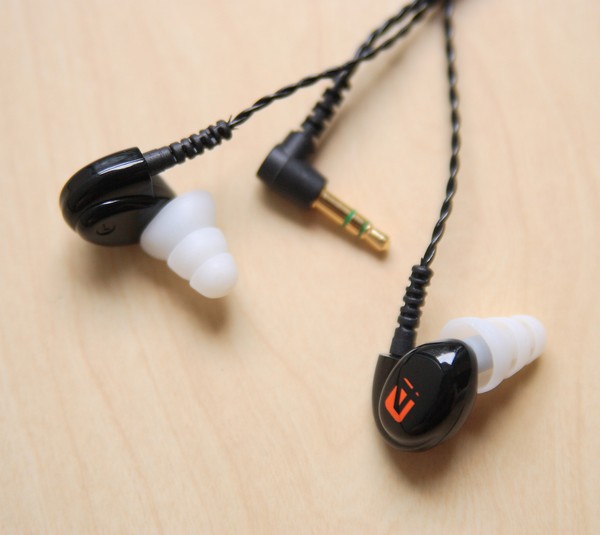
and Shure SE535:
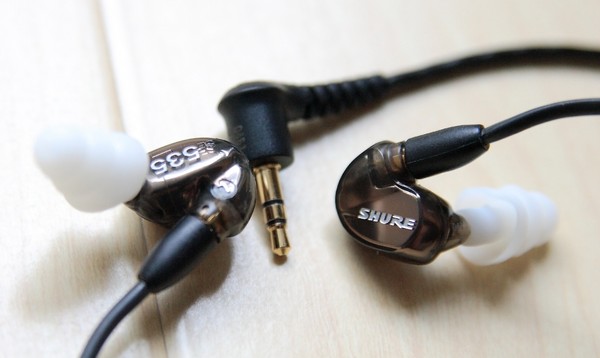
The newest addition in my studio is the Westone 4 (referred to as W4 from here on), and I have recently put it through its paces. But before I get to the W4, I should backtrack a little and talk about the previous IEM’s I have owned (but I’m not going to talk much about the ones I have auditioned but not owned), since the W4 marks the end of my IEM search. I’ve talked about the W3 and SE535 before, but I’m going to revisit them now so there’s a point of reference for the W4’s review.
Shure E4C – I started my IEM search with the Shure E4C, which I found to be a bit fatiguing in the upper-mids, and lacked authoritative bass reproduction. With EQ, I tolerated, but even with EQ, there were times when the upper-mids were still a bit too bright, since the MP3 players I used at the time (Creative Zen and iPod) didn’t allow for precise parametric EQ and were simple graphical EQ’s with limited pre-designated frequencies instead, which did not allow me to target the problematic frequencies (namely the 7KHz region for the excessive brightness, and the sub-125Hz region for the bass/sub-bass). A couple of years ago, the E4C got fried by a faulty airline adapter, so it was a forced retirement.
Westone 3 – I replaced the E4C with the Westone 3 (referred to as W3 from here on). The W3 was very comfortable and had much better cables, but it was too colored in its sonic signature, with the mid/upper bass region far too exaggerated and boomy, to the point of drowning out all the mids and subbass detail, and it too had a resonant peak in the 7KHz region, and a lack of air (upper treble). I regretted buying the W3 based on online reviews without auditioning it first (I had no way of finding a pair to audition due to where I lived). I tried my best to EQ the W3 closer to being neutral/accurate, and I got fairly close using the graphic equalizer on the Creative Zen, but since it’s a graphic equalizer, you could only tweak the frequencies pre-determined by whoever designed the EQ. I lived with the W3 grudgingly, but since I rarely used IEM’s anyway (only when I’m traveling, and I don’t travel that much), it didn’t bother me as much as it could have.
Shure SE530 PTH – I then got the Shure SE530 PTH, hoping it was be the ideal IEM, based on all the reviews I read. Again, it wasn’t. I should have learned my lesson about buying blind without auditioning first, but the problem is, there’s nothing I could do about it because where I live (Fuzhou, a 3rd-rate city in the Fujian province, where it’s impossible to find mid to high-end products in many segments of the market, with audio being one of them). So I have to rely on buying blindly and then testing for myself to see if I will keep it or sell it. The SE530’s got excellent bass response–it’s one of the most accurate and neutral I have heard in IEM’s, but its 7KHz resonant peak was worse than the others, and it also lacked air as well. Its cable design was also horrible, easily cracked and not being modular, you couldn’t just swap the cable out. The PTH (Push To Hear) device was large and clumsy, although it did work. In the end, I returned it to the person I bought it from because it had a cracked cable and the person didn’t mention it when selling it to me.
Shure SE535 – When the SE535 came out, everyone said the updated version improved upon the SE530, so I decided to give it a shot. They were only partially right. The new modular cable system is much better, though still hard to manage due to being so thick, and the sonic signature was so similar to the SE530 that it was like buying the same pair of IEM’s except with a modular cable system.
At this point, I had also discovered the equalizer apps for the iDevices like EQu and Equalizer, both parametric EQ’s that allowed for precise tweaking of the sound (with Equalizer being the superior app). This made all the difference in the world, since with custom EQ curves and good listening skills, one can remedy many of the flaws one hears in an audio reproduction device like headphones and speakers. After much testing and experimenting, I came up with these custom EQ curves for the W3 and SE535:
This is the EQ curve I created for the W3 (using the triple-flange tips with the smallest flange and the stalk cut off), which I then reproduced in the Equalizer app in the iDevices.
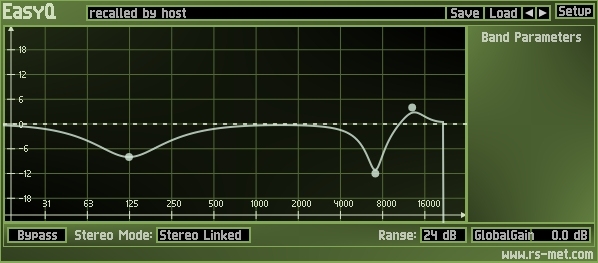
And this is the EQ curve for the SE535 (using the triple-flange tips with the smallest flange and the stalk cut off):
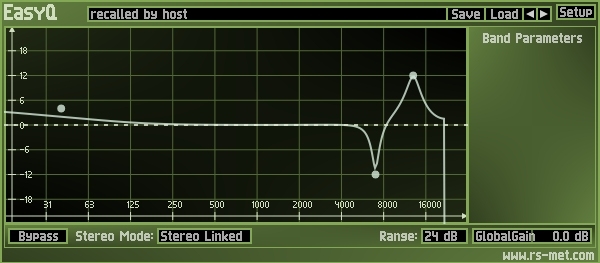
I could have been happy after I had created the ideal EQ curves for the two IEM’s I had, and I could have picked just one to keep and sell the other one, since with custom EQ curves, I made them sound so similar to my ideal sonic signature that it was unnecessary to keep both. But I continued my search, because I didn’t like the idea of having any audio devices that are too colored without EQ, not to mention EQ’s drain the battery faster on portable devices. Around this time, the W4 appeared on the market, and all the review say it sounds very different from the W3 and addressed all the complaints people have had about the W3 over the years. Since buying blind was the only way for me to test headphones, I went for it and hoped for the best.
So now finally, we get the the W4. My main goal was to find a pair of IEM’s that I didn’t have to EQ and still sounded great and without glaring problems in its sonic signature. In a way, the W4 gives me that, but there’s always a “but.”
First of all, the W4 is definitely much better than the W3, since it’s obvious that Westone listened to all the complaints about W3 and tuned the W4 according to those complaints, while they also tried to keep some of what people loved about the W3. So the result is like a compromise between the W3 and what I consider a neutral and accurate sonic signature–in other words, the W4 is still colored, but not as severe as the W3.
To give you an idea of the kind of EQ curve it takes to get the W4 close to the LCD-2’s sonic signature (the LCD-2 being the king of all my headphones currently), here’s a screenshot (the W4 using the triple-flange tips with the smallest flange and the stalk cut off) :
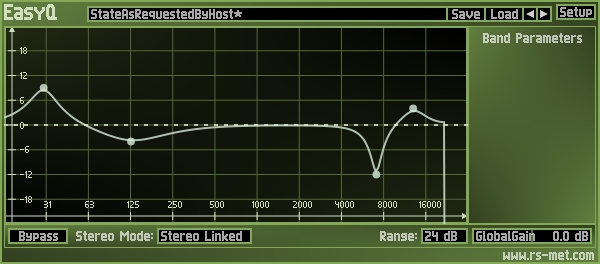
I can probably refine this EQ curve even more and get it even closer to the LCD-2, but for now, that EQ curve already gets pretty close (though missing a bit of clarity/resolution/punchiness overall across all frequency ranges, and I think it may be because of the differences in the inherent physical characteristics of the two driver technologies). For those of you who own both the LCD-2 and W4, give this EQ curve a try if you want your W4 to sound more like the LCD-2 (which IMO is definitely a superior headphone in all ways possible).
Compared to the W3, the W4’s bass has a similar shape, but not nearly as exaggerated and boomy. That doesn’t mean its bass is neutral/flat/accurate though, since W4’s bass is still significantly emphasized, but just not to the degree of W3 (about halfway between W3 and neutral). If you listen to any music where the accuracy of the bass response is critical, it becomes immediately obvious the bass is still too prominent. Sparse jazz arrangements that contains a double-bass makes this very obvious. The W4 renders double-bass with too much bloom/mud compared to a much more accurate headphone like the LCD-2. I also gave the W4 a boost in the lowest sub-bass, because I found it lacking some body down there (though the W3 didn’t seem to need that boost). The cut in the 125Hz range is exactly half the amount of cut I use for the W3, which tells me that the W4’s bass emphasis is exactly half of the W3, but still 4 dB too prominent. Compared to the SE535, the W4’s bass is definitely not as accurate/neutral. SE535’s bass is actually one of its strongest features, since it’s very close to being neutral.
The mids of the W4 is pretty good for the most part, although that pesky 7KHz ear canal resonance is there, just like with most IEM’s. Part of me wishes that IEM engineers simply just design around that ear canal resonance, but I understand why they don’t–it’s because we all have different shaped ear canals, and the different tips can also alter the sound. If you use my EQ curve with any of the tips that aren’t really long and fill the ear-canal like the triple-flange or the long grey tips, and then turn the EQ on and off, it’s very obvious how much of a difference a steep narrow cut in the 7KHz region makes. Without that cut, all cymbals, hi-hats, shakers, tamborines…etc sound really congested and distorted, and the vocals–especially female vocals, sound sibilant. This may not be obvious if you have never listened to the W4 with my EQ curve, but once you do, you can’t not notice it–it’s as plain as day. Compared to the W3, W4’s mids are not nearly as fatiguing/bright in the 7KHz range though. Compared to the SE535, the W4 is less colored, since I have always felt that the SE535’s upper-mids is too emphasized, to the point of being fatiguing and overly bright.
The treble needs about the same amount of boost as W3 in the 13KHz range for a bit more air, so they are actually kind of similar. Compared to the SE535, the W4’s treble is a bit more clear/prominent, since the SE535 would require a bigger boost in the 13KHz range to get enough air in the upper-treble region.
While discussing the resonance peak issue on head-fi.org, someone convinced me to give different tips a try (previously I had stopped believing that they made enough of a difference, since with the E4C W3, and SE530, the different tips didn’t change the sound enough for me to give them too much consideration. But when I tried the different tips with the W4, I found that the peak resonance in the upper-mids and the treble had significant changes. With the Triple-flange, the upper-mids are much more tame and does not require that EQ cut at 7KHz, while the treble is also softer as well (this is comparing to triple-flange with the smallest flange and the stalk cut off). That was great news because that means the worst offender (the 7KHz resonant peak that causes fatigue/excessive brightness/sibilance) was tamed without needing EQ, and I happen to like the triple-flange tips the most, since they isolate the best while not needing to expand to fill the ears like the foam tips. The longer tips that fill in the ear-canal also takes away some of the air, so I had to boost the upper-treble a little bit more.
Now, I just use the triple-flange tips, and the EQ curve I use now is this:
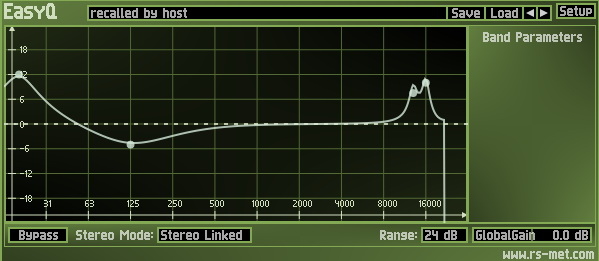
The largest comply grey sticky foam tips are also good, but I hate any kind of foam tips where you have to wait for it to expand for a seal. It’s just an extra step that’s kind of annoying. If I’m out and about, and every few minutes someone wants to say something to me, I’d have to pull out one ear, talk to the person, and then put it back in and then wait for the damn foam to expand. After doing that a few times, it’s just too much. The silicon tips are far more convenient. The hard semi-transparent tips I just can’t use at all. Never was able to get them to sit right in the ear or seal properly, even as far back as my Shure E4C days. I don’t know why companies even include those because I really wonder if anyone uses those at all.
With all that said, I think the W4 is the first IEM I have owned that I could listen to without using any EQ. While it is indeed colored without EQ, it is colored in a way that is fairly pleasing and acceptable for a lot of music. Most importantly, it does not break my first rule of audio devices, which is to first and foremost, do no harm. The W4 is not fatiguing/overly bright with the triple-flange or long grey comply tips, and with the other IEMs, changing tips didn’t solve their problems with the resonant peak. The W4’s bass emphasis while is noticeable, actually is quite acceptable for most musical material, and it’s only when you get into really refined music like jazz and classical do you notice it and want to turn the EQ on to smooth out the bass response so it’s not overpowering what shouldn’t be overshadowed.
Now that I have found a pair of IEM I can happily live with, I’ve sold the SE535 and W3. I could continue my search in the custom-molded IEM realm, but I have no interest in custom-molded IEM’s since I don’t like the idea that they could only fit me and no one else. I can try other univeral IEM’s, but I have a feeling that the other universal IEM’s aren’t necessarily better, but simply different. While the W4 isn’t perfect, and in general it still requires significant EQ’ing to get close to sounding neutral, but at least it is colored in a way that is acceptable to me. I think my IEM journey ends here, until one day I hear something much closer to my idea of neutral, but I’m not going out of my way to audition any more IEM’s, since I really don’t use IEM’s that much anyway.
…
Quickie TV/movie reviews:
Game of Thrones (season one) – One of the very best TV shows I’ve ever had the pleasure to experience. First rate storytelling that transcends its fantasy roots, with engrossing plot development and characters you can love (or love to hate). The production quality is extremely high, with beautiful cinematography, intricate costume design, and beautiful sets. The actors were also very well cast and very believable. I can’t wait for season two, and I plan to read the books it is based on as well.
Boardwalk Empire (season one) – A very enjoyable period drama during the Al Capone era, about the fine line between good and evil where the characters are constantly crossing from one side to other with every decision they make. When you’ve got Martin Scorsese onboard, you know you’ve got a quality show.
Dexter (season five) – Another enjoyable season of our favorite serial killer. I was a bit disappointed by Julia Stiles, since I find when she’s doing scenes of being emotionally upset, it looked too much like she was going through the motions, but when during scenes of happiness, she looked a lot more genuine to me.
Nikita (season one) – I was very skeptical about Nikita, since that whole franchise has been milked a few times already, not to mentioned it’s been ripped off by Alias too. I watched mostly because I was curious about Maggie Q. I’ve seen her in other movies before, but she never actually did any real acting in any of them–she just did stunts most of the time. Obviously she was chosen to play Nikita for her martial arts chops, but I was very surprised to see that Maggie Q is actually quite a fine actress, and she’s been underused in all the previous films that treated her as just some pretty face who can kick ass.
I remembered Lyndsy Fonseca from How I Met Your Mother, and I thought she was gorgeous in that context. She’s certainly very pretty, but somehow I find her lacking that unique charm that stars have.
I kept thinking that the plot would jump the shark at some point, since these spy shows usually end up getting a bit ridiculous, but everything remained fairly coherent and relatively believable. I’ll probably give season two a try when it comes out.
Gasland – A documentary about how drilling for natural gas destroys the quality of drinking water. The style of the film is more poetic and sincere than the kind of manipulative sensationalism we often see these days.
13 Assassins / å三人ã®åˆºå®¢ – An entertaining film that’s not dissimilar to the Seven Samurai in its core. The action isn’t realistic–more of a stylized approach, but it’s not cartoony either like many action films with absolutely unrealistic fighting scenes.
3 Idiots – I understand exactly why a film like this made such a huge splash in Asia, and why it didn’t do well in the west. The film addresses the sheep mentality of the educational system and how Asians are forced to obey authority blindly since birth, dutifully play the role that society expects of them, without individual thought or creativity. The main characters in the film rebelled against those traditions and asked the audience to question authority and to exercise individualism in their life choices instead of being herded like sheep through life. Obviously, this a one of the biggest problems of Asian culture, and the film spoke directly to Asians. But in the west, there’s no such problem, as western culture prizes individualism, imagination, creativity, and personal happiness, so these lessons taught by the film would just seem like preaching to the choir.
The Diving Bell and the Butterfly – This is the kind of film where I respect the creativity and the intention, but the execution doesn’t quite resonate with me. I have to wonder why they never mentioned Morse code though, even if it’s just to explain why it wasn’t a suitable solution, if they considered it at all.
Infestation – A silly horror/comedy that had a few moments of fun, but overall a bit clumsy. The final explosion scene made no sense whatsoever, and considering that’s the climax of the movie, it says a lot about the level of failure of that scene.
127 Hours – Danny Boyle is now one of those directors whose career I follow, as he’s got a great style and a unique sensibility. While I enjoyed 127 Hours, I thought the material itself is a bit too thin for a feature length film, even though Boyle did the best he could to keep it interesting. It’s also hard to relate to the main character, since his values, passions, and lifestyle is completely different from most of us–we don’t have his foolish arrogance, and the fact that the person the film is based on continued to do live his life the same way even after losing his arm, is just beyond comprehension. Is there nothing else in civilization that interests him? Must his thrills in life only come from climbing dangerous mountains and risking his life? Different strokes for different folks, I guess.
All the President’s Men – I have always enjoyed movies by Robert Redford, because he’s one of those people who obviously has a lot of integrity, and he made films of integrity as well. I’ve heard about this film for many yeas and finally got around to watching it, and I was surprised by how well it holds up in terms of not seeming dated, which is a rare thing for movies that old. I could also see how it has influenced films of that genre I’ve seen all my life–that realistic portrayal of investigative reporting of political scandals/conspiracies.
The Informant! – I’m a Steven Soderbergh fan and try to watch everything he directs. I enjoyed This black comedy based on a real life criminal case, and because the circumstances were so bizarre, I understood why it had to be made as a comedy instead of a serious crime drama. I know a few people with bipolar, and it’s definitely no joke–people become delusional, go through intense mood swings, lie, cheat, and do all sorts of things that would seem outrageous and illogical to the rest of us. It’s a real tragedy when the brain is sick, and I hope our advances in medical science will one day be able to fully understand the brain and treat it as easily as we treat simple and curable diseases.
Day of the Dead (2008 remake) – This is what happens when people of dubious talent make a movie. This film should not be called a remake because it has nothing to do with the original in any way. The original was about the political struggle between the military and the scientists as the are holed up in a bunker, and one mad scientist’s obsession with training a zombie to obey orders. This remake’s only similarity to the original is that there’s a zombie that obeys orders and is protective of its “owner.”
The level of incompetence displayed in this film was staggering, and close to the epic failings of of Uwe Boll proportions. The people who made this film clearly had no idea what is great about the zombie apocalypse genre, and are only exploiting it to make a quick buck.
Some hilariously bad scenes:
-A zombie jumped on the ceiling like in The Exorcist.
-The lead female character while fighting for her life and running through a parking lot filled with zombies, pulled open a random car door to stop a zombie in its track and then shot it. How the hell did she know that particular car’s door was unlocked?
-When a zombie jumped on the hood of a moving car and broke the window, no one in the car seemed to know that slamming on the brakes would throw the attacking zombie off. The female lead just kept driving like a complete idiot, while the zombie tried to reach in and bite them.
-The teenage kid brother of the female lead, without explanation, could shoot firearms at moving targets with the skill of a highly trained special forces operator. (But then again, so many mindless action films make this kind of mistake.)
-When in the underground lab, two characters starts kicking in the doors for no reason while checking what’s in each room. They didn’t even bother trying the doorknobs.
-When one of the characters pick up a stack of documents and said “Your name’s on every one of them,” he only had one second to look at the very top document in the stack. How the hell did he know the guy’s name is in every one of them if he only saw the first page?
-The surviving characters were blowing away zombies as if they were all trained special forces operators, even when a couple of them were just teenagers. Then later, all of a sudden when they fired multiple guns together at the same time, they couldn’t hit a single scientist zombie moving slowly in a confined hallway, only because he was a bit smarter than the other zombies–he knew how to strafe.
-When the kid brother says, “Five minutes, not a second longer” none of them bothered to look at a watch to see what time it was. So how the hell would they know when five minutes was up?
-One of the soldiers started firing two sub-machine guns randomly at nothing as soon as they opened a door, and actually says “Just in case.” Where the hell did this moron get his military training from?
-The entire missile propulsion tanks scene was a head-scratcher. How the hell did some random teenager know how to rig an electrical charge to set off military missile propulsion tanks? And why the hell didn’t the tanks shoot forward when they were ignited? Even if they were chained together, they would have shot forward. They’re missile propulsion tanks for crying out loud.
-The editor was also made some baffling choices. He would edit in these clichéd “cool” jerky digital transition flashes during shots where the zombies are shown just milling about, as if it was the opening credits to Se7en or some trendy music video, and that was the only time he did it in the entire movie, which then made it stick out like a sore thumb, looking completely out of context and pointless. He also edited the film so the zombies moved far quicker than normal humans, and sometimes in that jerky, clichéd horror film style where the movements of the supernatural creature is unnaturally jerky. But the problem is, these zombies are not supernatural–they are merely infected humans from a biological weapon.
As if all of that wasn’t enough, the worst acting I’ve seen in a very long time was also in this movie, courtesy of Nick Cannon. Some people just shouldn’t be acting.
I dislike being so harsh about other people’s creative work, but man, this one deserved it.
The Zombie Diaries – Basically another Blair Witch styled movie, with ultra low budget and amateur actors. The movie had convoluted and slow pacing, and the directing was just horrible, as if no one bothered to do more than a single take for each shot, no matter how bad the take was. Even the action scenes were terrible, coming in two general flavors:
1) Totally unconvincing and lacking any sense of urgency or dread.
2) Completely incoherent, with basically some guy running while point the camera down, or the lens zoomed out so far that there’s absolutely no sense of immediate surrounding or the characters’ relationship to their environment.
I long for the day that World War Z finally hits the theaters. I’m sure it’ll be far superior to all the recent crappy zombie films that’s stinking up the genre.
I’m currently reading A Song of Fire and Ice (I’m partway through the third book). They really are excellent, and the episodes stick very closely to the first book. I would say that the show actually enriches the source material, which is mostly to do with all the actors bringing such life to their characters. The books have more history and backstory, especially in regards to the various families vying for power, that would drag the show down. I think watching/reading both is definitely the way to go, as they really complement each other.
Tell us about the W4.
good review of in-ear phones. I plan to buy the W4’s tomorrow and hope I’m happy enough with them to stop my search. I’m returning the W2 and UM2. Really disliked the latter for excessive, muddy bass that stepped all over mid and highs. W2’s good, but not good enough by a long shot..even though I got for $177 (new) on Amazon. I just rec’d Grado GR10’s today and am extremely disappointed with the sound and the comfort. Crossing my fingers that W4’s will be great.
I will try your EQ advice. EQ really helps although I currently have only what comes in ITunes program.
Will you be getting the Westone 4R? Would love to read your review on that 🙂
How is it different from the Westone 4 besides the cables? It seems to me it’s just the cables that’s different?
Thank You for your expertise on the Westone 4’s. Part of the reason i purchased thm was because of your review and the eq settings you provide which i have copied using easyq via wavelab. My plan is to recode the eq for all the music on my iriver so that i have the best portable sound system i can get. I use a Leckerton uha-6s between the iriver and the westone 4’s.
I have a problem however. I use the long foam tips and the eq setting which doesnt have that 7hz cut. Whilst it does sound good and clear, i do get sibilance on some tracks. I have tried introducing a similar cut but cant get rid of the sibilance.
What can i do??
Many thanks
Stuart
@Stuart – What you can try is this–take a very narrow-band cut of about maybe 6dB or so, and sweep it all around the sibilance range (roughly 4KHz to 8KHz). Do it slowly until you find the right spot that seems to hit the exact frequency causing the sibilance. Then, Adjust the amount of cut until you cut just enough to get rid of the sibilance. Don’t overdo it because then you’ll lose clarity. It might only take 3 dB, or it might take 6 or more–just experiment and you’ll find the sweet spot. Also, don’t forget that some recordings are naturally a bit bright, so don’t base your decision on just a small sampling of similar types of music–try all different genres–from rock, pop, electronica, metal, jazz, classical, hip-hop, film scores..etc. Also check those same recordings on another piece of gear–maybe speakers or another headphone, so you can be sure that it really is the W4 that’s introducing the siblance, not the tracks themselves.
I’m sure you would have heard of it, why didn’t you get the Etymotic ER4P? Isn’t that known for it’s “reference level” neutrality? Their specs match up too.
The peak just around 9.5KHz/10KHz in the Westone 4’s is more pronounced (relative to the amplitude in rest of the frequency graph) than the Etymotics, with the SE535’s 7KHz peak in the middle of the two in terms of relationship to the amplitude of their 20Hz to 1KHz frequencies. Wouldn’t the rise from 7KHz upwards in the Westone 4’s mean the relative increase in perceived 7KHz be similar with the continued rise require a dip on your EQ there too?
All 3 IEMs dip after 1KHz and have a similar shape to the high end. I’m still getting my head around how the nuances of the high end’s ups and downs get perceived, but wouldn’t they be perceived as being close enough to eachother to the listener? Does the shape of the the ear start to be a critical factor as to the final outcome up at this end? I mean the driver quality at this price point I would imagine would be hard to fault.
All I have heard is the SE535’s and their bass is definitely superb. Their 20Hz to 1KHz graph is almost exactly the same as the Westone 4’s, which only adds to my confusion on the whole thing!
This is more difficult than buying a pair of shoes!
I’m a newb. Any one who can clarify any of my misunderstandings/help me understand more gets an invisible high five!
I did like the ER4P when I auditioned it. Its mids and highs are great, but it lacked authoritative sub-bass presence, and that is one thing that’s harder to EQ properly on most portable devices (due to inherent limitations of most device’s built-in graphic equalizer. On iOS, it’s much better since we have standalone parametric EQ apps like Equalizer and Equ).
As for dealing with the sibilant regions such as that 7KHz peak, it depends on the IEM and the tips used. With the Westone 4, when I use the triple-flanged silicon tips, they nullify that peak, so I don’t have to cut with EQ, but when I use a different set of tips, I would have to make a cut. With the SE535, regardless of what tips I used, I had to make that cut (and that was one of the reasons I sold it, along with it’s stiff cables being the other reason).
wow you just answered all my questions about the westone and shure iem,thank you
Hi , I followed your recommendation and I purchase a pair of W4 headphones . What seem worked for you , they only lasted a week .
I spend 2 hr at the gym and I guess the sweat made his job . I can hear clearly on the left side while on the right side I hear distortion very clearly while listening to adels someone like you .
It sounds like chip monks signing on the ear , at this point the iPhone white headphones sounds way better !
Sorry to hear that. Will Westone give you a replacement?
Hello,
thanks for the review!
I came from the Shure SE425 and the sound signature of
the W4R ist the best I have ever heard! Someday I will give
the UE Reference Monitor a try but 1000 bugs are a lot 😉
Greeting from Germany!
Michael
The Good Wife is well worth the investment of time.